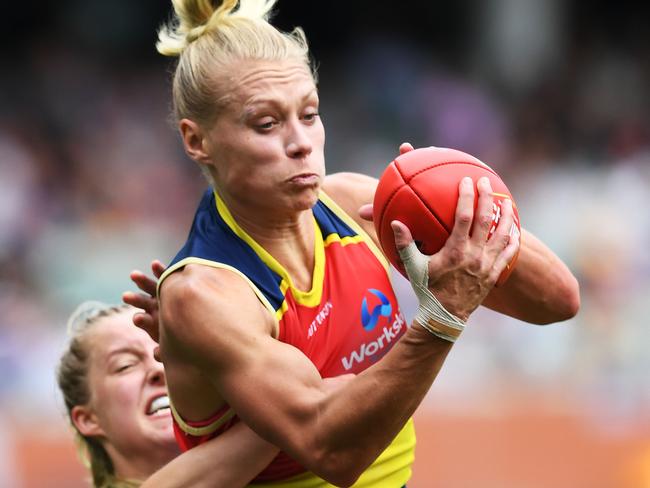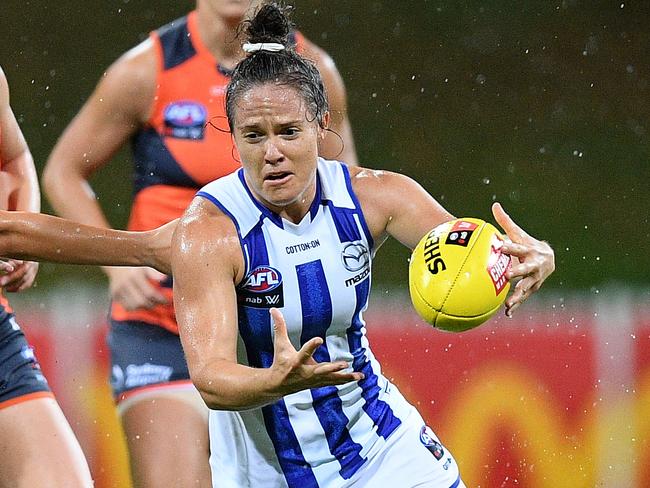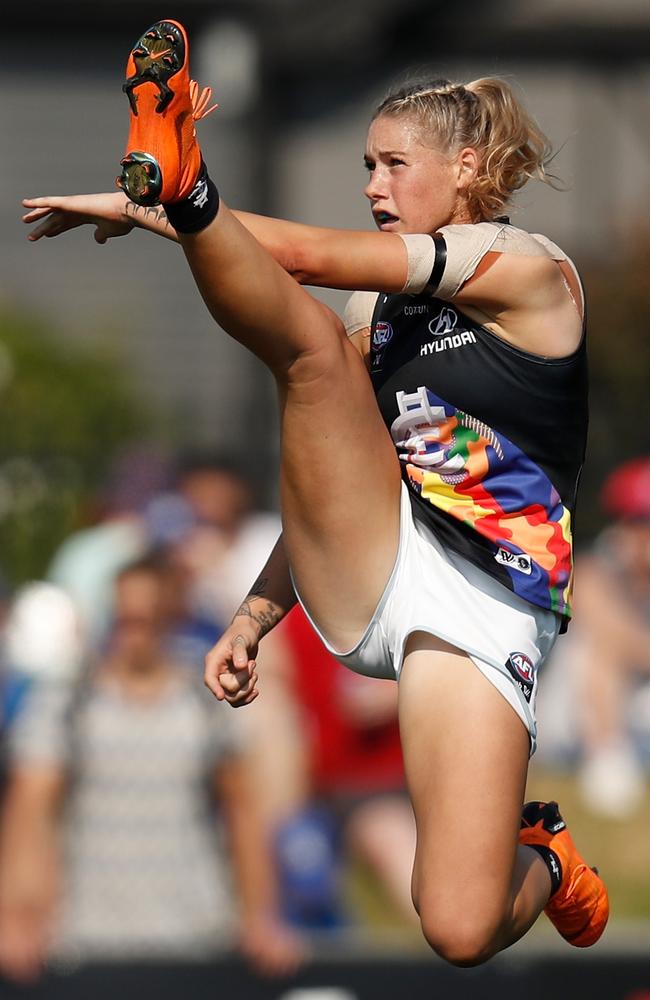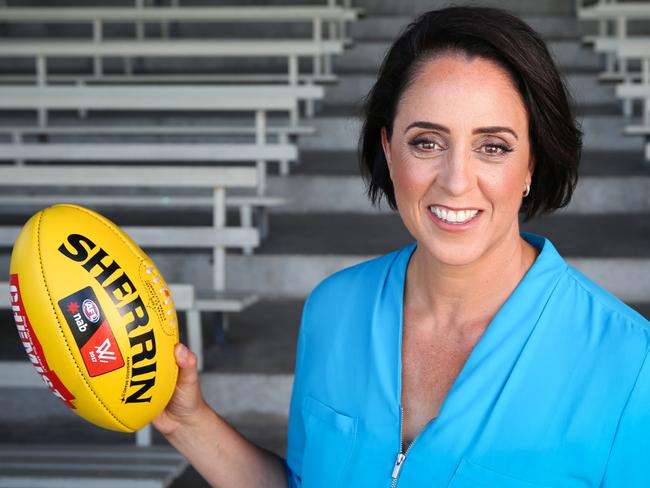Third year of AFLW has proven a landmark season, both on and off the field
The third year of AFLW has not been short of talking points, but it has also been a season that has really put the competition on the map on and off the field. And it’s just the start of things to come, writes Lauren Wood.

AFLW
Don't miss out on the headlines from AFLW. Followed categories will be added to My News.
This season of AFL Women’s has been a huge step forward.
A step forward in standard, a step forward in prominence and a step forward in the competition’s development.
From the emergence of Carlton young gun Maddy Prespakis, who has taken hold of her opportunity with both hands and flourished, to Erin Phillips simply continuing to amaze with her brilliance and longevity.
BRIANNA DAVEY ON HER SPORTING JOURNEY TO AFLW GRAND FINAL
STAR BLUE TICKS OFF GRAND FINAL AMBITION
THE SEVEN WORDS THAT SHAPED THE CROWS’ SEASON
Then there’s Jess Duffin, who with reigning best-and-fairest Emma Kearney hopped over to the Kangaroos and dominated, and Ebony Marinoff who racked up disposals like no one else and Kiara Bowers who looked anything but like she had been sidelined for two seasons.
It was special. It’s been exciting.
Tens of thousands have attended matches and hundreds of thousands more have tuned in at home, as the more than 300 AFL Women’s-listed players realised their footballing dreams and showcased their talent to the nation.
Things have been taken to a new level.
And this has been reflected at grassroots level too, with half a million girls running around with a Sherrin at most recent count.

But while there has been plenty of movement forward, there have been some backward — and even sideways — steps.
The conference system remains an issue — there’s no denying that.
It isn’t the best-performed teams contesting the premiership. To have only 10 clubs and not one ladder? It was all about being “unique and innovative”, the league said, when really it just wasn’t necessary.
With four new teams coming in next season, it will be reviewed. It has to be.
The biggest negative of the season — albeit resulting in a positive — came just last week, when Tayla Harris was relentlessly targeted online following that iconic photo.

She gave the boot to sexists the world over. Not trolls. That’s too all-encompassing.
Sexist, degrading, homophobic, misogynistic — let’s call these comments what they are, not just “trolling”.
And didn’t she give them the kick, standing up to play one of the games of her life last Saturday to help the Blues into Sunday’s grand final against Adelaide.
We’re done with celebrating the fact there is a competition, and that there is opportunity.
That’s all great. We know that.
That was done in the first couple of years. It’s time for the talk to be walked on pay, and for players to be contracted beyond the 10 hours a week afforded to clubs this season.
That’s shorter than a binge-watching session of the latest Netflix drama — an incredibly short window in which our elite women are expected to recover, train, learn game plans and execute them.
Now it’s time to play.

BY THE NUMBERS
Total participation in Australian rules: 1,649,178 (up 6.54 per cent)
Female participation: 530,166 (up 14.42 per cent, and accounting for 32.1 per cent of total participation)
Female teams: 2281 (up 35 per cent)
*2018 Australia wide figures



